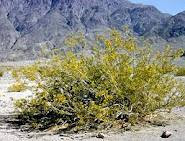The mole plant is so named because it was believed that it deterred moles and other creatures from making a mess of a garden. For the same reason it is called gopher plant in North America . It is a member of the spurge or Euphorbiaceae family which make it s close relative of petty spurge, poinsettia, the Candlenut tree, jamalgota (Croton tiglium), the castor bean plant, yucca, and both French and Dog’s mercury.
The whole plant is toxic and should be treated with caution. Despite this it has been use in traditional medicine systems in the past. The name ‘spurge’ comes from the Middle English and Old French, ‘espurge’ which means to purge, thus showing what these spurge family plants were traditionally used for in terms of medicine. The mole plant is native to Europe and possibly to Britain, although it may have been a garden escapee there and become naturalized.
 French people living in rural locations were said to take 12–15 seeds as a purgative, perhaps similar in action and toxicity to castor oil or perhaps even to jamalgota. However one seed is sufficient as a mild laxative. The root is also used as a purgative and emetic (to produce vomiting and so cleanse the system). The leaves and sap or latex from the plant, are vesicant, and have been used by beggars so that they produce blisters and weeping sores which meant that they aroused more sympathy and so got more money. The latex was used in folk medicine for cancers and to remove corns and warts. It is also said to have antiseptic and diuretic properties. In the past the mole plant was used for diarrhea, gangrene, melanoma, skin ailments, sores, and sore throats. The seeds are used in homeopathy for erysipelas, paralysis, and rheumatism. The seed oil is applied to burns, however this is not recommended.
French people living in rural locations were said to take 12–15 seeds as a purgative, perhaps similar in action and toxicity to castor oil or perhaps even to jamalgota. However one seed is sufficient as a mild laxative. The root is also used as a purgative and emetic (to produce vomiting and so cleanse the system). The leaves and sap or latex from the plant, are vesicant, and have been used by beggars so that they produce blisters and weeping sores which meant that they aroused more sympathy and so got more money. The latex was used in folk medicine for cancers and to remove corns and warts. It is also said to have antiseptic and diuretic properties. In the past the mole plant was used for diarrhea, gangrene, melanoma, skin ailments, sores, and sore throats. The seeds are used in homeopathy for erysipelas, paralysis, and rheumatism. The seed oil is applied to burns, however this is not recommended. The seed is also said to have the ability to kill parasites. The fresh seeds have been used to treat cancerous tumours and leukaemia, and the oil is antiseptic.
The plant is in flower between May and June and the seeds ripen in July and August. The seeds need to be steeped in salted water for days before using and then pickled in vinegar to be used as a caper substitute, however given their toxicity it is not recommended that they are used.
 The Nobel Laureate, Melvin Calvin believed that the oil from this plant could be used as fuel and used in refineries without too many problems. He first stated this in 1976, but the plant has not been used for fuel yet.
The Nobel Laureate, Melvin Calvin believed that the oil from this plant could be used as fuel and used in refineries without too many problems. He first stated this in 1976, but the plant has not been used for fuel yet. The latex from the plant has reportedly been used as a depilatory, but given the irritancy caused by this latex it is not advisable to put it on the skin.
This is a plant that should not be used medicinally, or for food; this post is for information only.

































